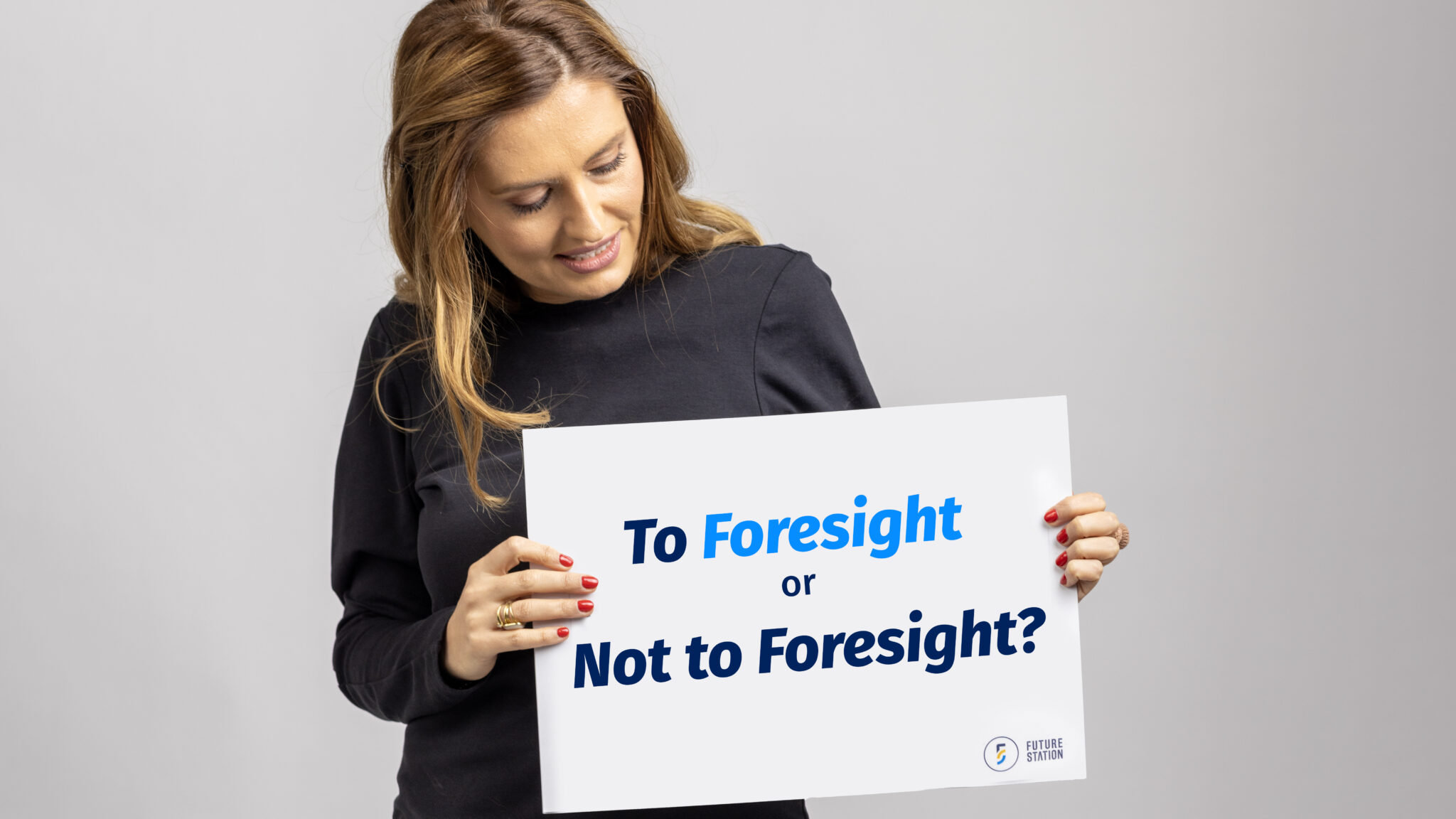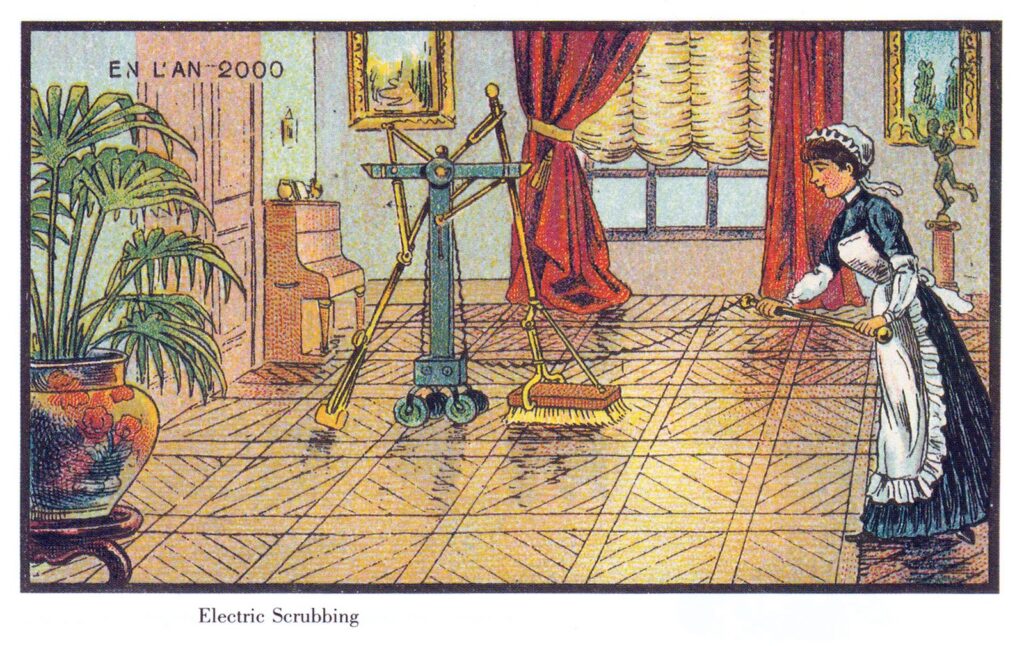
Who uses foresight – consciously or unconsciously
To foresight or not to foresight? Next time you ask yourself this question, just know—you’re already doing it.
Foresight isn’t just for futurists or foresight professionals. Whether we realize it or not, many professions rely on it to make informed decisions, anticipate risks, and shape long-term strategies. Some apply it systematically, while others integrate it intuitively into their work.
We all use the future in our decisions
Even at an individual level, we are all “Homo Prospectus,” as psychologists Daniel Gilbert and Martin Seligman describe humans in their research. We constantly simulate future possibilities before making decisions:
- What should I wear today? → We check the weather forecast.
- Which career should I choose? → We imagine long-term job prospects.
- Where should I invest my money? → We analyze trends and risks.
If foresight is embedded in our daily lives, it’s no surprise that certain professions rely on it even more intentionally.
Professions that rely on foresight
1. Military & Defense strategists
Foresight has deep roots in military strategy. RAND Corporation, one of the most influential think tanks in futures research, was originally founded by a U.S. Air Force officer. Many principles of foresight—scenario planning, wargaming, and risk assessment—come from military strategy, where anticipating potential threats and technological advancements is critical.
2. Investors & Venture capitalists
Investment decisions are bets on the future. Firms like BlackRock systematically track and update megatrends, which help them identify long-term investment opportunities in areas like climate change, technology, and demographics. These insights shape where capital flows, influencing entire industries.
It is interesting to read about what BackRock calls thematic investing. More specifically, they say that at the core of BlackRock’s strategy are five megatrends shaping the future, guiding investment decisions in areas such as technological innovation, demographic shifts, and sustainability. This kind of foresight helps investors anticipate structural changes early, positioning themselves ahead of market transformations rather than reacting to them.
3. Architects & Urban planners
Buildings and cities are designed to last decades, sometimes centuries. That’s why firms like Arup have dedicated foresight teams to explore future societal, environmental, and technological changes. Some urban planners embrace “Cathedral Thinking”—the idea of designing for a future they may not live to see, just as medieval builders started cathedrals knowing they would be completed by future generations.
On Arup’s website, they describe their approach:
Arup’s Foresight team explores an increasingly complex and ambiguous future. Our multidisciplinary team of futurists, designers and technical experts help our clients and partners to gain a long-term and insightful view of the future. They identify early signals of change, analyzing the impact of major trends and exploring future operating contexts. Using these rigorous methods, Foresight helps clients to make better decisions, manage opportunities and risks, and invest wisely.”
This structured approach ensures that cities and infrastructure projects remain functional and resilient in the face of shifting realities, from climate change to demographic transformations.
4. Product designers & Innovators
Innovators don’t just create for today—they envision how products will fit into future lifestyles. A drawing from the early 1900s imagined a futuristic vacuum cleaner, but it doesn’t look like a Dyson today. That’s because foresight isn’t about predicting the future with precision—it’s about anticipating possible needs and expectations of society and consumers.

5. Risk managers & Insurance specialists
Insurers don’t just react to risks—they anticipate them. AXA’s foresight department publishes an annual report on emerging risks, helping businesses and policymakers prepare for economic shifts, environmental crises, and technological disruptions. As AXA’s Foresight Team describes it:
Insurance is built on future potential events. Its success is based on understanding and anticipating them through the best possible vision of tomorrow. This is the role of the Group Foresight, which helps provide a lens into possible futures by identifying main trends likely to emerge in the years ahead and allowing us to better navigate uncertain times.”
But AXA is just one example—many other insurance companies and financial institutions for sure use foresight and futures thinking – – consciously or unconsciously.
6. Journalists & Media analysts
Journalists act as societal “sense-makers,” identifying emerging trends and shaping how the public perceives the future. Whether it’s investigative reporting on climate risks, technological breakthroughs, or geopolitical shifts, media outlets help frame possible futures—sometimes influencing public policy and business strategies.
You might be using foresight already!
These are just a few examples. Many other professions—medicine, education, policymaking—use foresight in different ways. Some do it explicitly, with structured methodologies, while others integrate it organically into their decision-making.
From my personal experience working with organizations across industries, foresight is already happening inside most companies. Leaders are thinking ahead, working with scenarios, and anticipating change—not because someone introduced them to foresight, but because it’s necessary for survival. However, in many cases, foresight is either isolated (a one-off exercise, not an ongoing process) or limited to best-case vs. worst-case scenarios, missing the complexity in between.
At Future Station, we don’t claim to bring foresight where it doesn’t exist. Instead, we help organizations structure and expand their approach—connecting weak signals, integrating multiple perspectives, and moving beyond black-and-white thinking. Because the future isn’t just a choice between good and bad—it’s full of possibilities.
Let’s talk futures!



